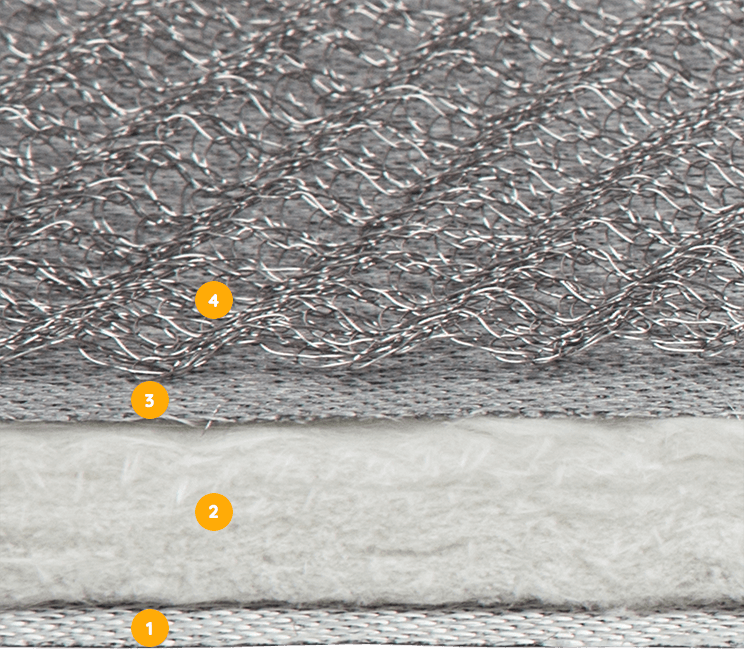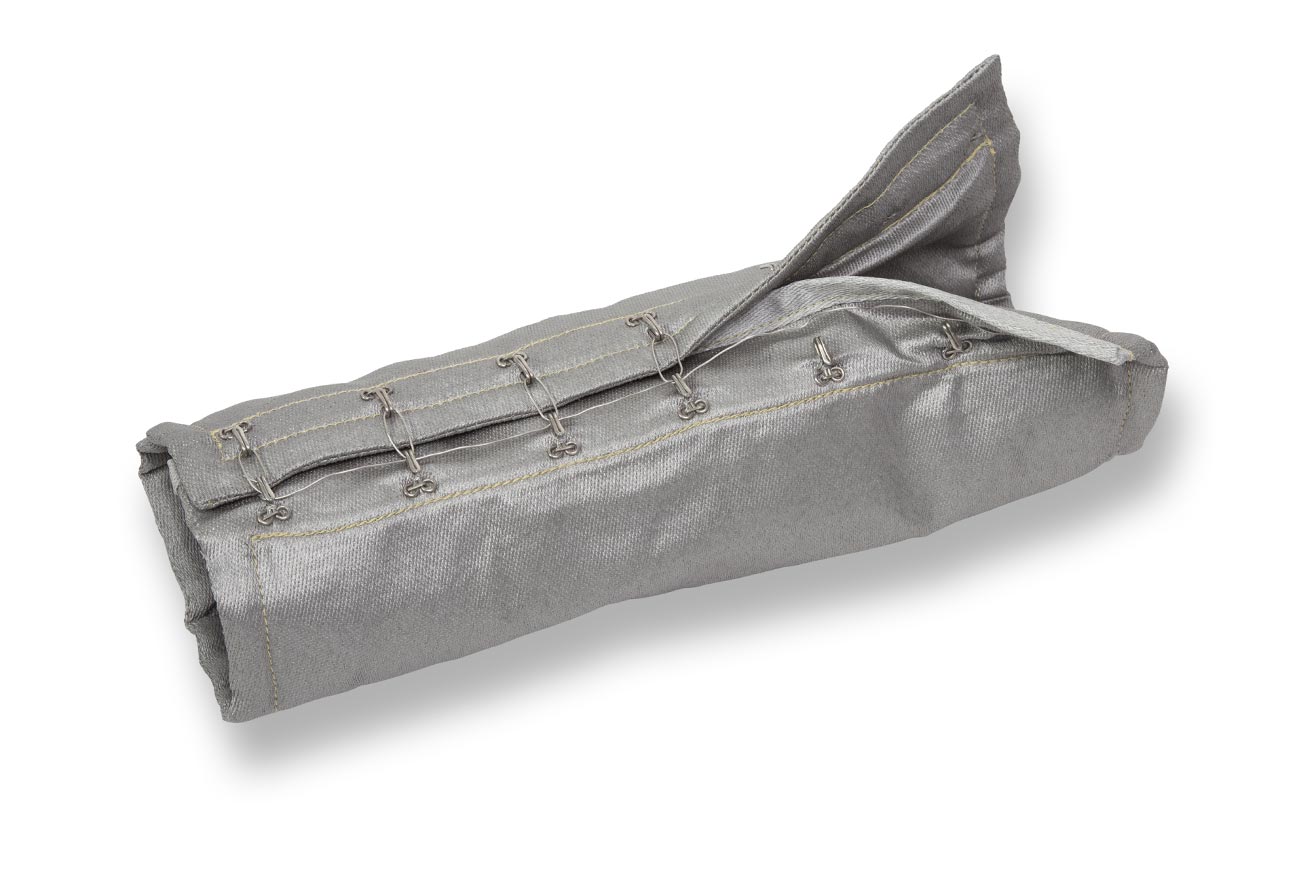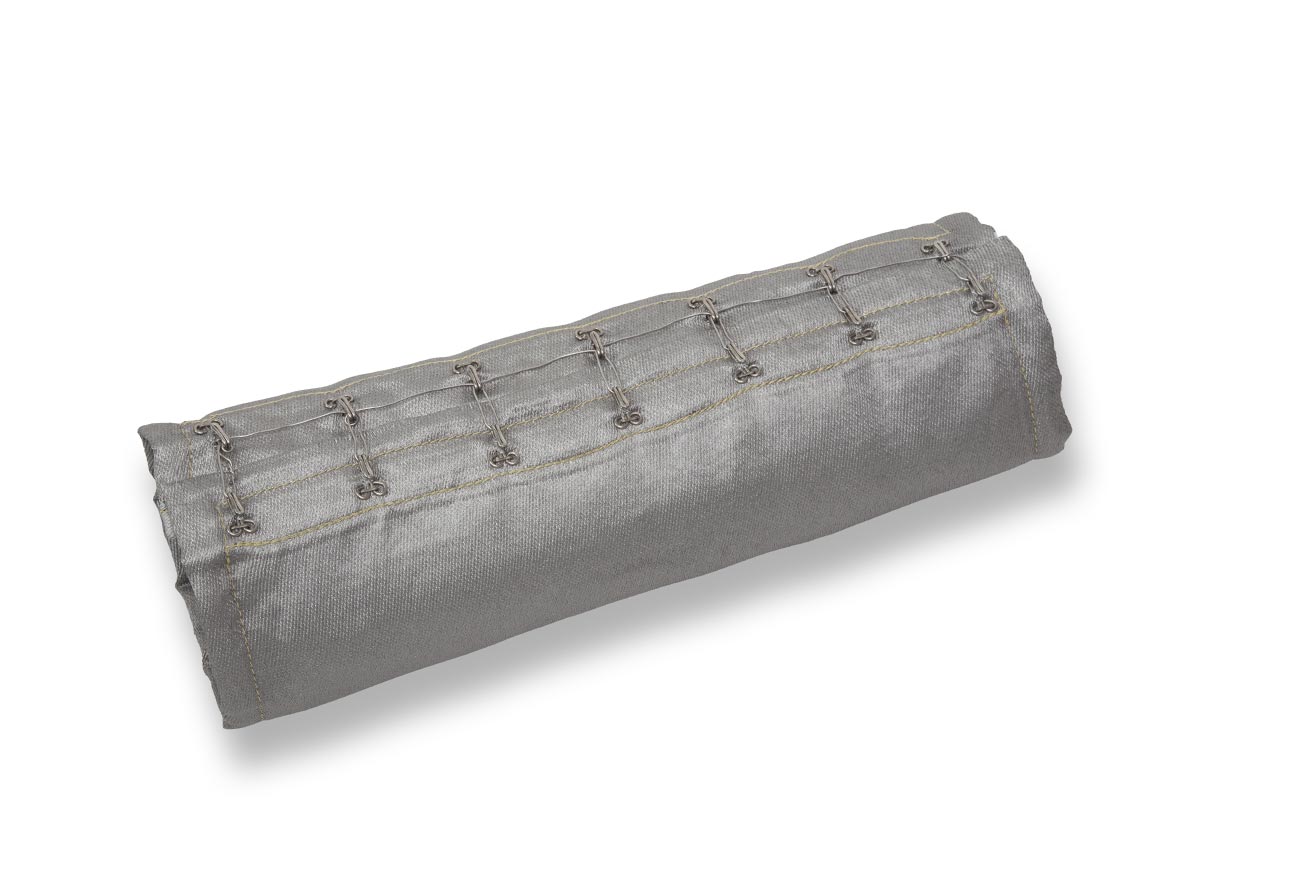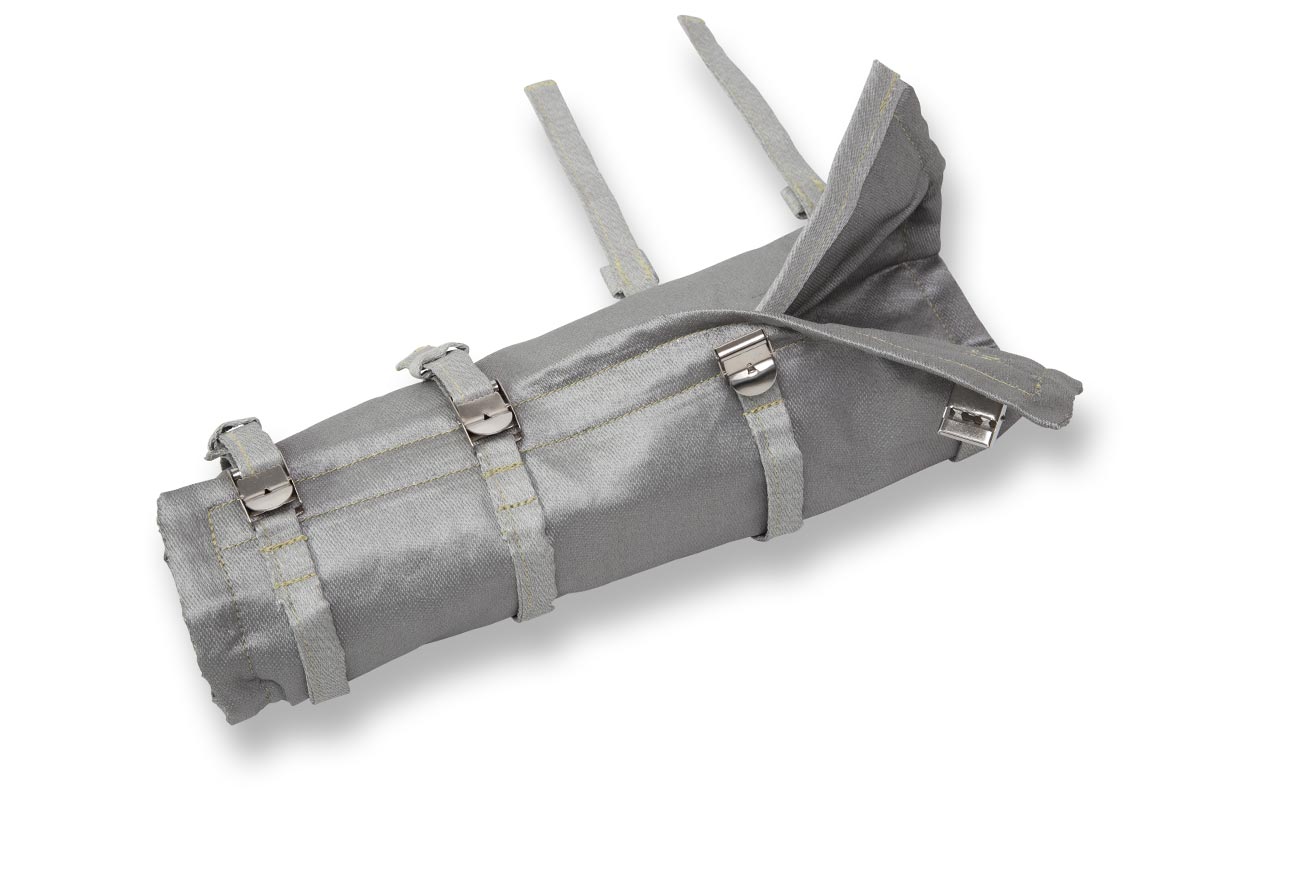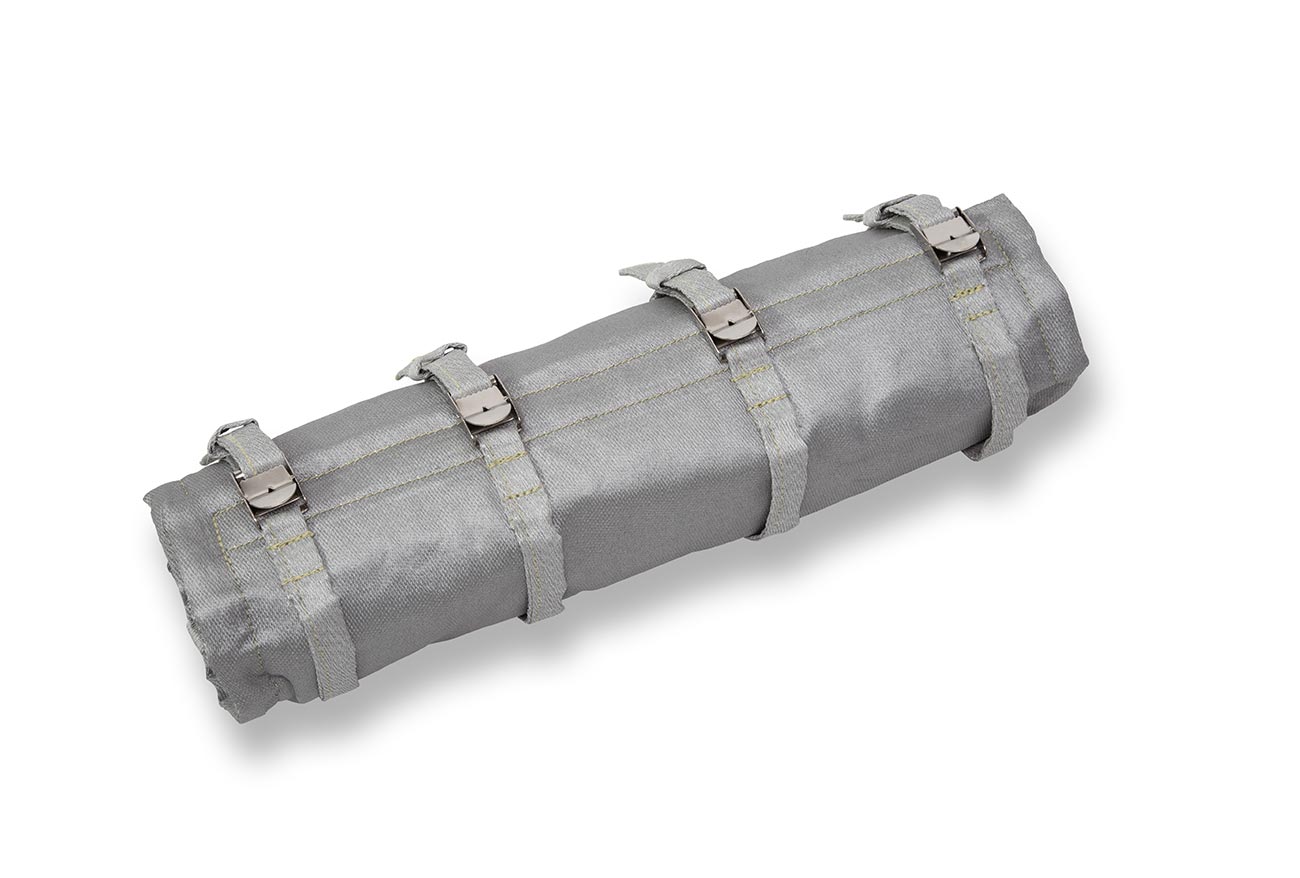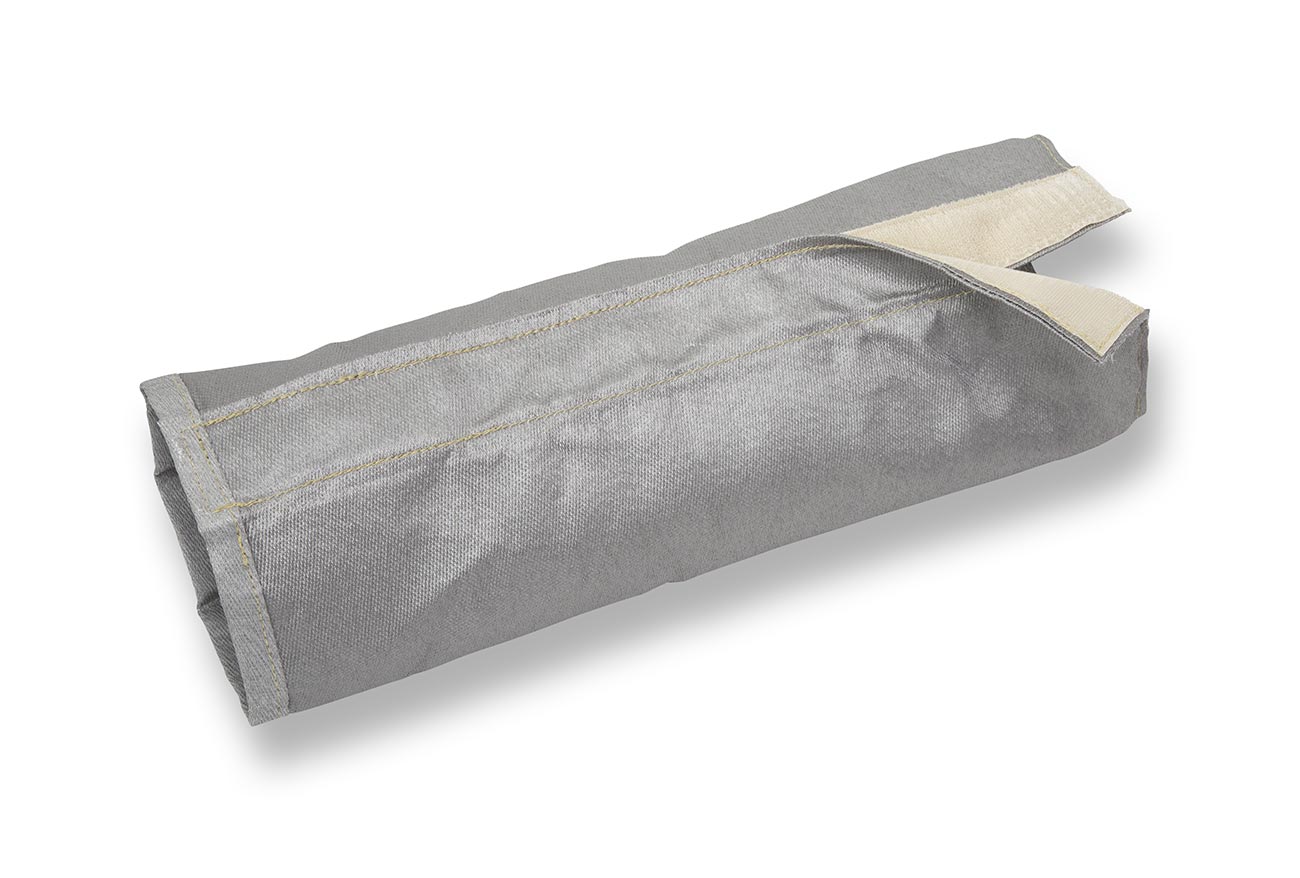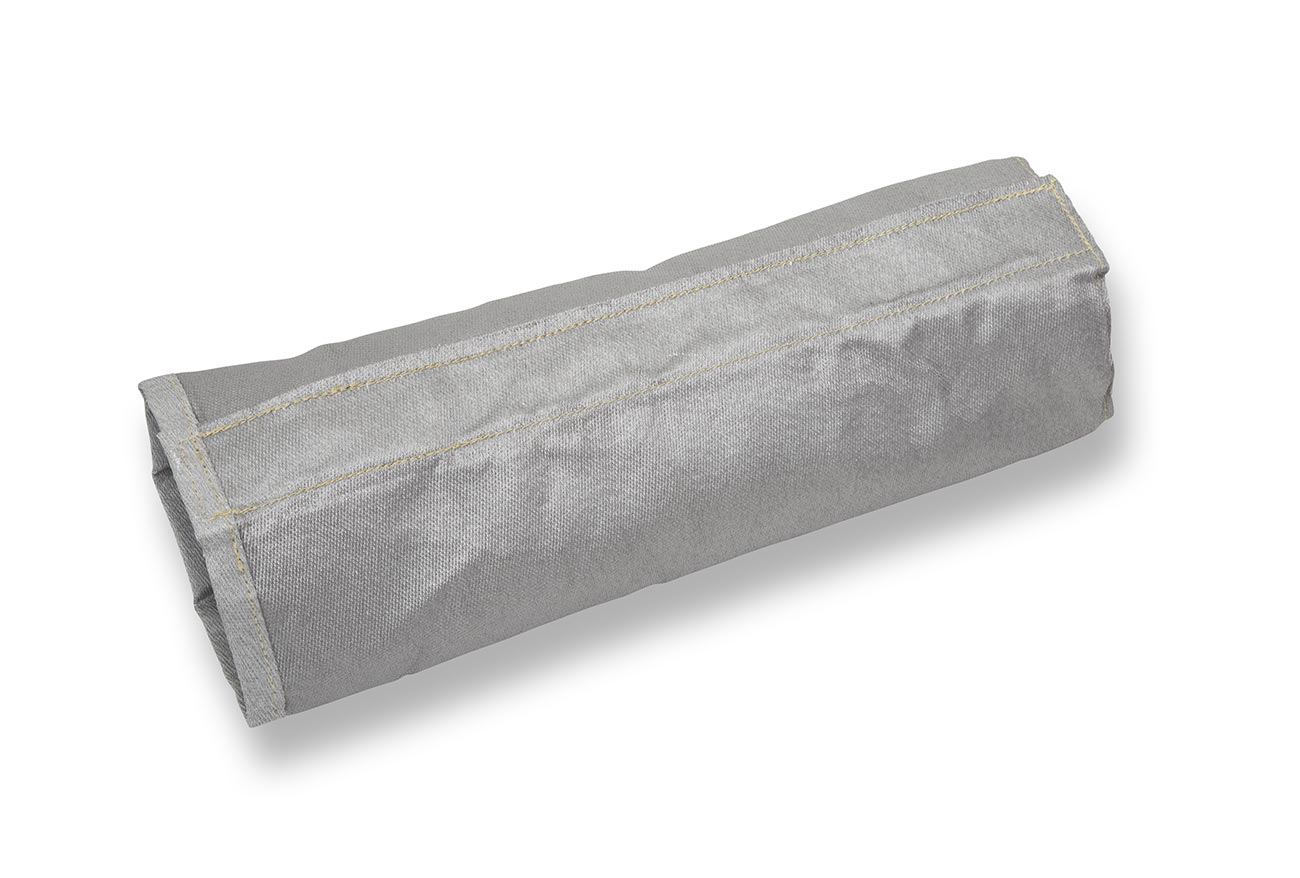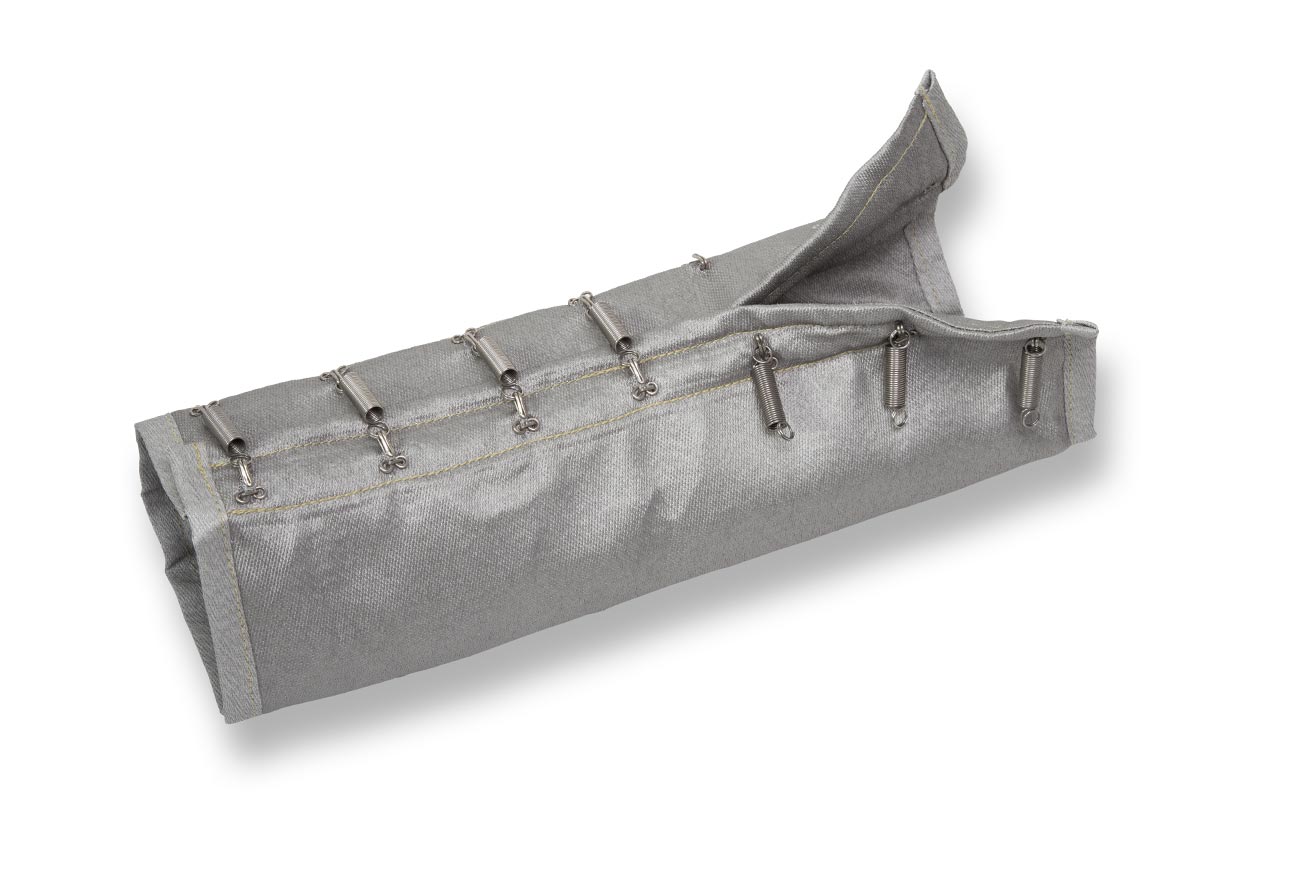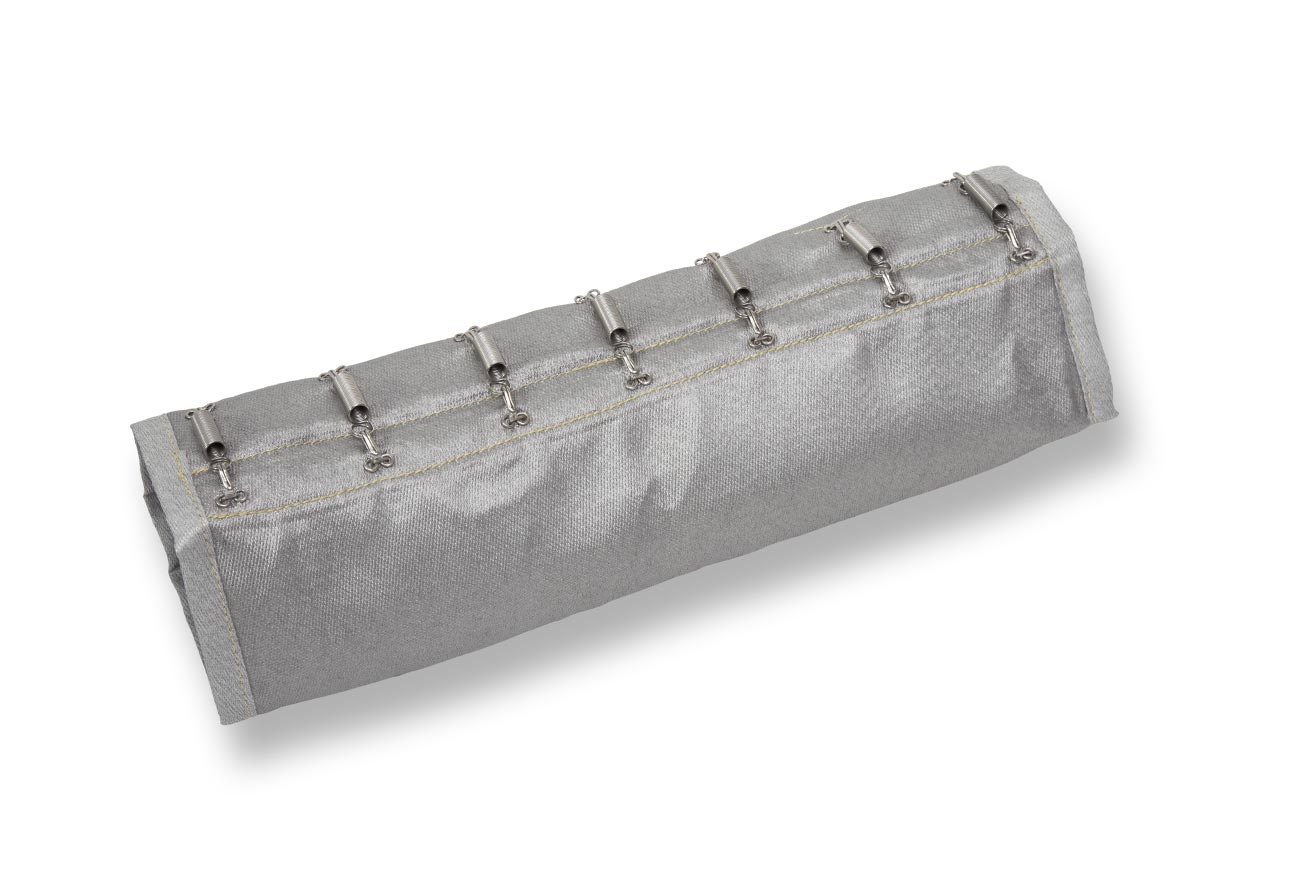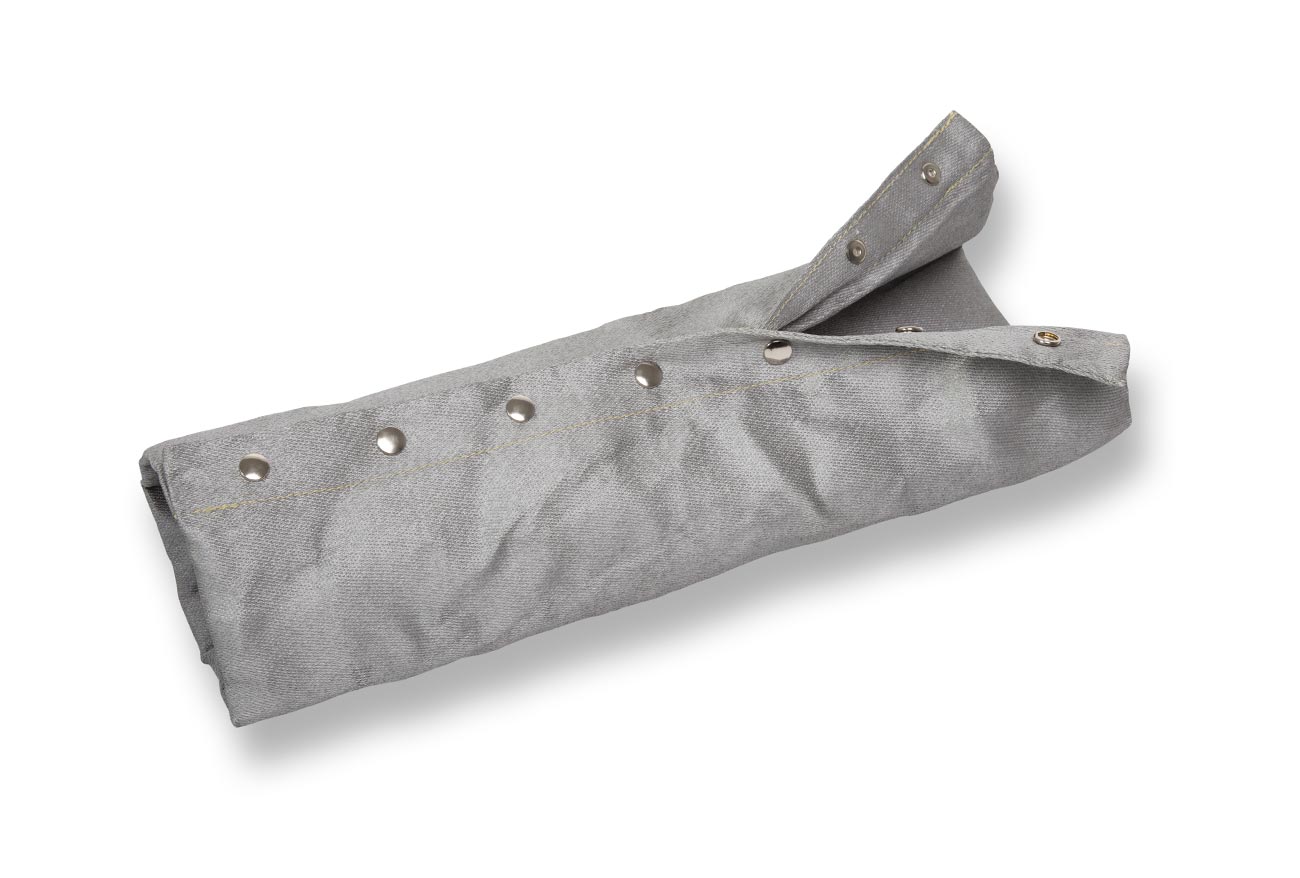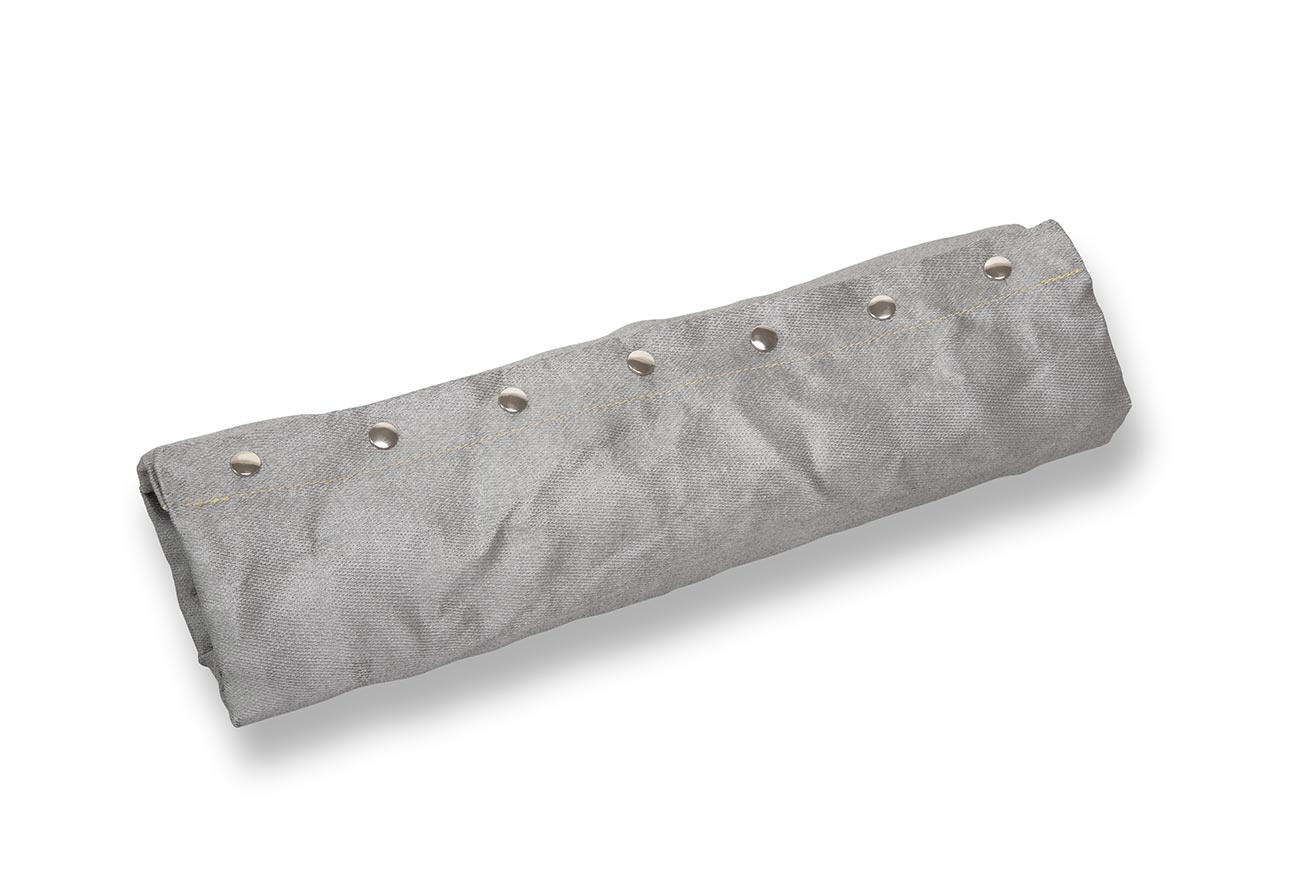External fabric
With less thermal load, but in some cases harsh environments, such as in construction- or snow grooming machines, the exterior must be able to withstand dirt, coolants, oil, snow, etc. Therefore, different coatings are available.
Insulating material
As the actual insulating layer we use needled glass fiber mats (E-glass). These are textile fabrics made from individual fibers, which are held together by their own adhesive capacity and solidified by mechanical methods. The insulation effect is regulated by the insulation thickness.
Internal fabric
These high-performance fabrics made of E-glass or silicate have a temperature resistance of up to 1100 ° C to withstand direct contact with the hot components, whereby stainless steel filaments are usually woven in the fabric to increase strength.
Wire mesh
Knitted wire fabrics are used on the inside of the insulation to protect the material from excessive abrasion, particularly in the case of strongly vibrating and/ or edged components.
Thread
The sewing thread is a steel filament covered with aramid to provide exceptionally high heat resistance combined with good processability.

